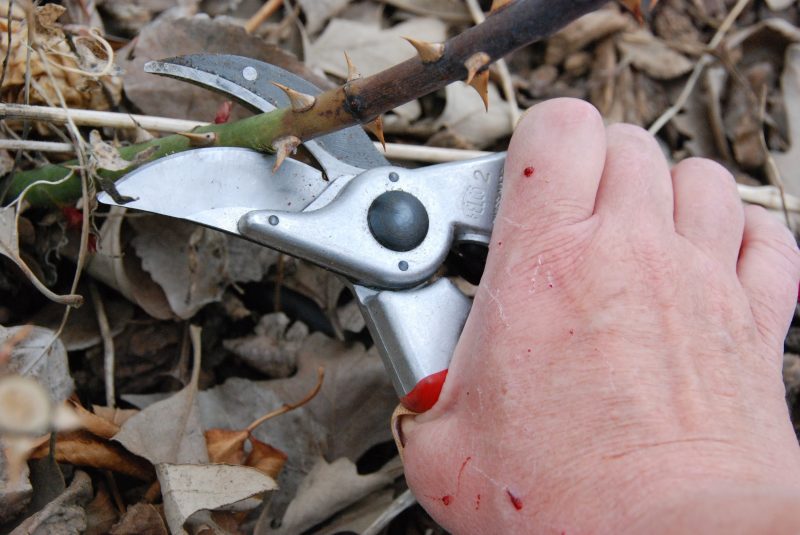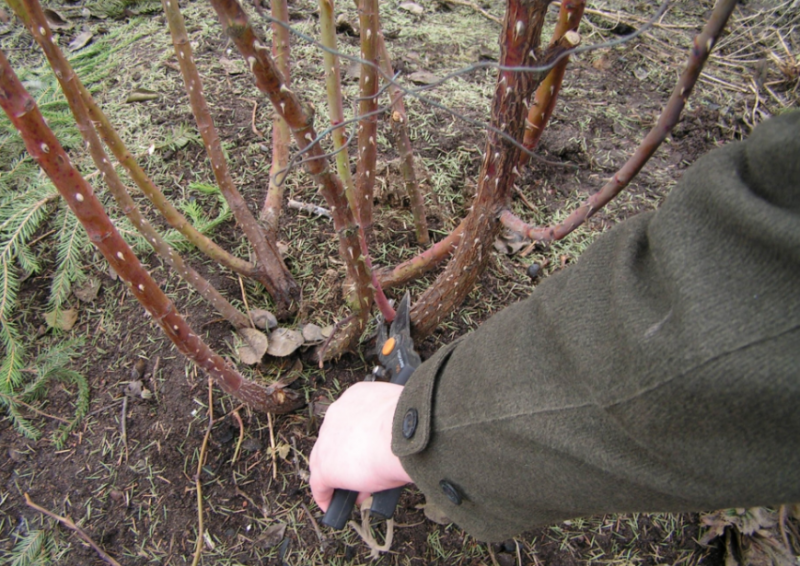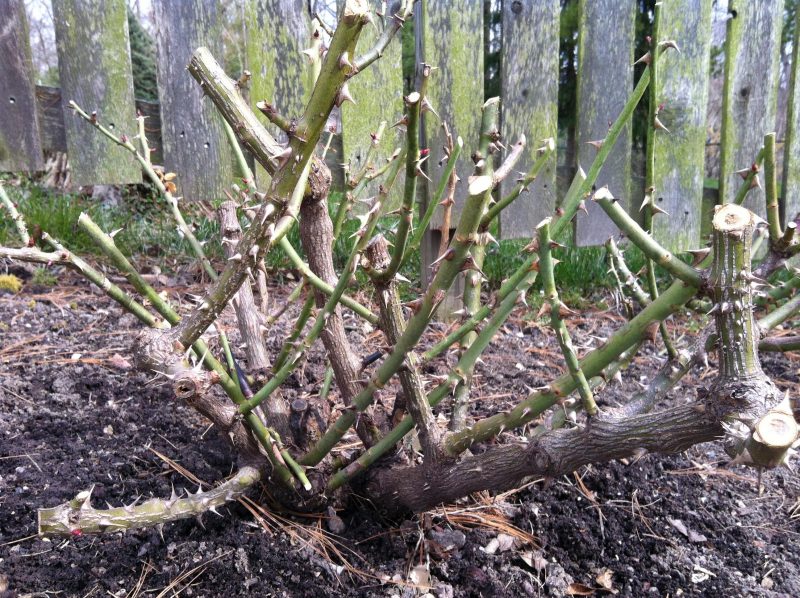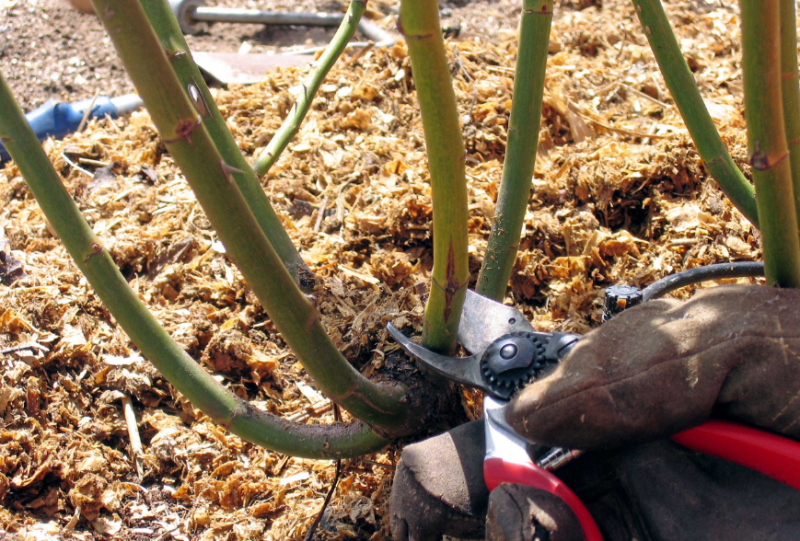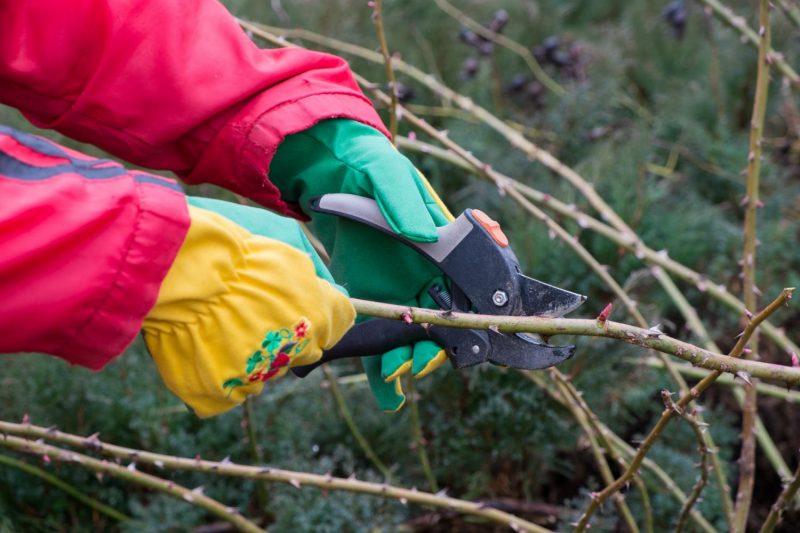In early spring, when flowerbeds are still not full of bright colors, it is necessary to take care of the beauty and health of future flowers, pruning roses after winter will be an important event. How to prune roses in spring is an exciting question for many beginner gardeners.
Material Content:
Spring pruning dates
Spring pruning is done immediately after removing the winter shelter. In central Russia, roses should be open in April. Shelter should be removed when the threat of frost passes. This is done in the evening or in cloudy weather, so that there are no sunburns left. They scoop up the earth and sawdust with which bushes were spudded, carefully examine them.
Spring pruning of roses depends on how they were prepared for winter. If in the autumn rose bushes are carefully trimmed and spud, in the spring there will be less work. Young shoots will grow out of the ground, and get a renewed, beautiful rose garden.
In the south of Russia, in the Crimea, where roses do not require winter shelter, pruning is done until mid-March, until active sap flow begins.
Schemes and step-by-step instructions for spring pruning roses
To work, you need a reliable and powerful secateurs. Cut dead shoots to living tissue. Under the cut there should be a living kidney that looks out of the bush. Then the young shoots will grow, creating a voluminous, well-lit crown near the bush. All old, cut shoots need to be collected and burned, they can be pests and diseases.
Before planting, all roses are cut short to balance the undeveloped root system and shoot growth. At the annual spring pruning, the age of the bush is taken into account.So, annual roses are pruned moderately, about 4-6 buds from the ground, and on the sandy soil only the ends of the branches are cut.
In biennial plants, all wild shoots, thin branches are cut. One-year-old, powerful shoots cut weakly, and two-year-old shoots cut strongly - 2-3 buds from the base.
In spring-pruning three-year-old and more adult plants, the variety and variety of the rose, as well as its purpose, are taken into account. If the flowers are grown for cutting, it is customary to cut them shortly - 2-3 buds from the base.
Proper pruning of roses of various types:
- How to crop curly roses depends on the method of wintering. It is best to remove them from the support before the onset of cold weather, and lay them in a horizontal position. Then there will be less freezing shoots, and minimal pruning will be required in spring. All damaged, thin and thickening branches also need to be removed. On climbing and semi-climbing roses, the oldest shoots at the root are cut once every 5 years, leaving 5-7 powerful shoots.
- Gently cut miniature roses, they recover for a long time. It is enough to cut them to 1/3 of the height, remove damaged and dried twigs.
- Moderately shorten ground cover roses. It is necessary to carry out corrective pruning, creating the shape of a bush, as well as cut out all dried and diseased shoots.
- Don't like short hair park roses. It is done 1 time in 5 years to rejuvenate the bush. Mandatory annual sanitary and shaping pruning. It is necessary to cut off thin shoots growing from the root - this is the overgrowth of the wild rose on which the rose was grafted. Remove all shoots growing inside so that the bush does not thicken.
- Hybrid Tea Roses after spring pruning, the main flower shoots with buds are formed. Most often they use medium pruning, to the middle of the shoots, because with a short time flowering is moved away. If the plant has not wintered very well, spring pruning will help it survive. Black, dark shoots are already dead, they need to be cut, and green, alive leave. Spring pruning on such plants is done before the first living bud.
For long and repeated flowering, roses will cut off withered flowers above the first bud located under them.
Caring for flowers after pruning
After trimming, the bush is treated with copper sulphate, and fertilizing with complex mineral fertilizer or wood ash will not hurt. When wild growth is cut off at the root, without leaving even the slightest hemp, the soil is shed with a solution of potassium permanganate for disinfection.
With a short cut, the bush is shaded. To do this, you can use improvised material, for example, an old bucket with holes in the bottom. It is placed on top of the plant so that the light can only enter through small holes. For shading, you can also use covering material with a thickness of 17 or 30 g / m.
Do not forget about watering the pruned roses, they need special care for the full restoration and growth of strong stems.
Common mistakes during the procedure
There are three ways to prune roses - easy (1/3 of the shoots), medium and strong, when only a few buds are left. Despite the apparent simplicity, this procedure raises many questions among beginner gardeners.
Possible errors and tips for fixing them:
- remains large stalk above the last to the cut kidney - correctly do pruning on the kidney, the stem will not blacken;
- straight cut shoot - it should be at an acute angle;
- the last a kidney looks inside the bush - it must be outdoor;
- dull or weak pruner can injure the stems - the tool must be powerful and sharp enough to make a one-time cut, and not leave a bark;
- frequent short cropping - with this method, roses quickly deplete, and can die, this is done, in extreme cases, if the bush is badly damaged in winter;
- short pruning of rose bushes in areas where sandy land - medium trim is preferred.
Knowing how to prune roses after wintering, you can avoid common mistakes, keep plants healthy and longevity.
Advantages and disadvantages of spring pruning
The disadvantages of spring pruning include the excessive zeal of some gardeners. Pruned roses too short will bloom later, and some varieties and varieties may not bloom at all.
But if the bush is depleted or very thickened, pruning will help to rejuvenate it, will return lush flowering. If you cut off the branches affected by the disease in time, you can save the plant from death. The dried and frosty ends of the shoots will gradually dry to the root. Wild rose hips are also dangerous. Growing from the root, it first slows down the growth of the grafted plant, and if it is not cut in time, it soon leads to its complete death.
Spring pruning is a mandatory procedure that will keep roses healthy.


